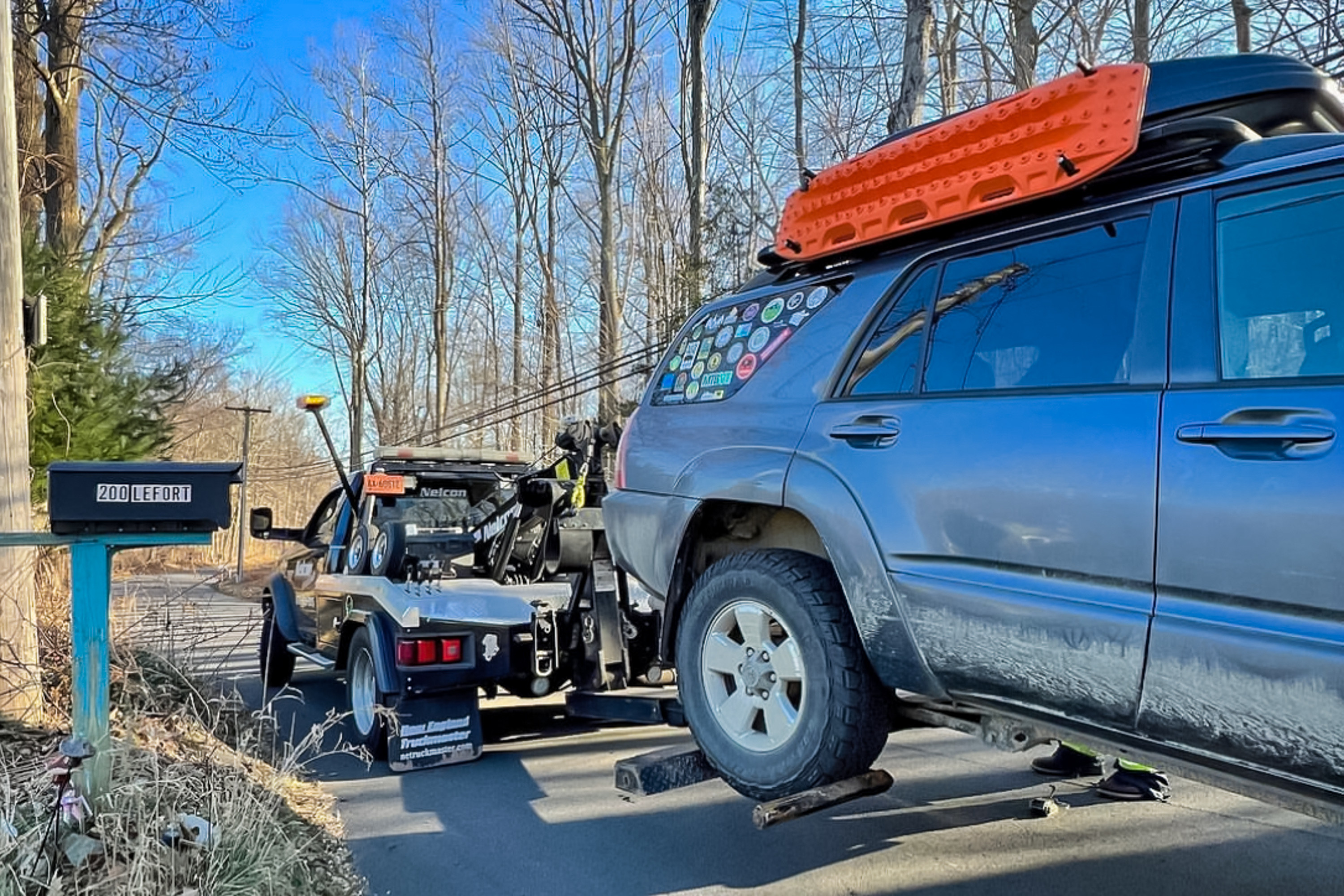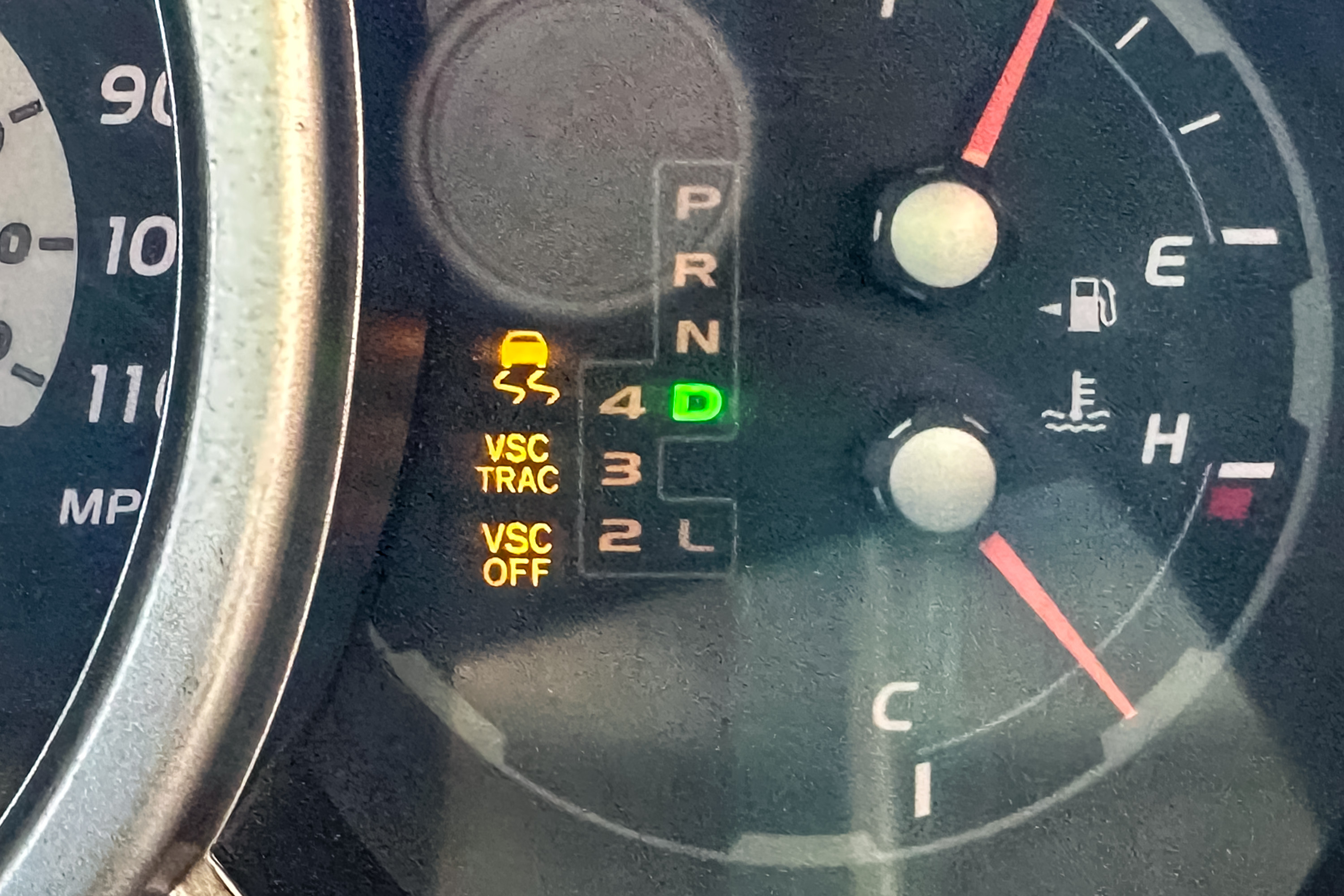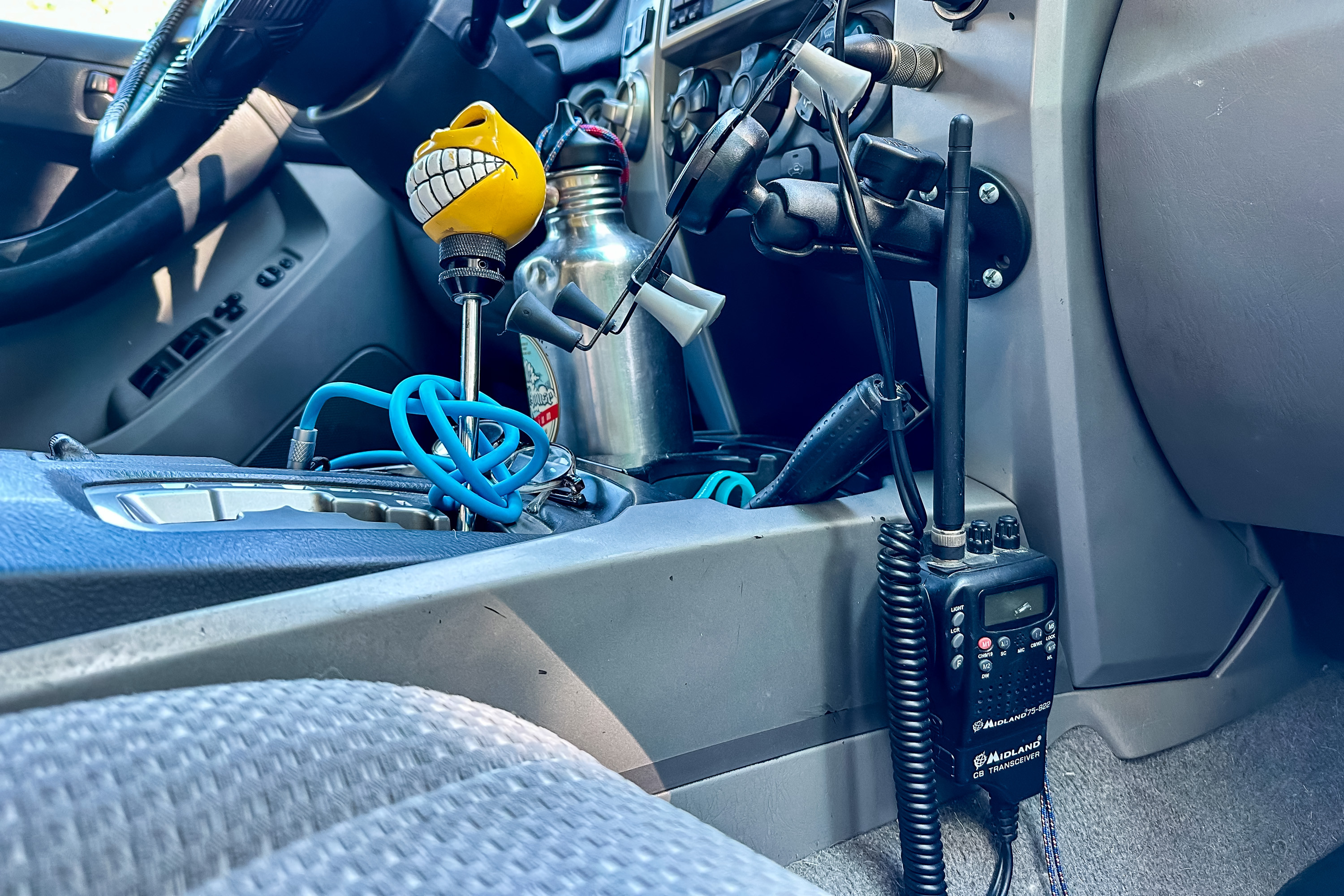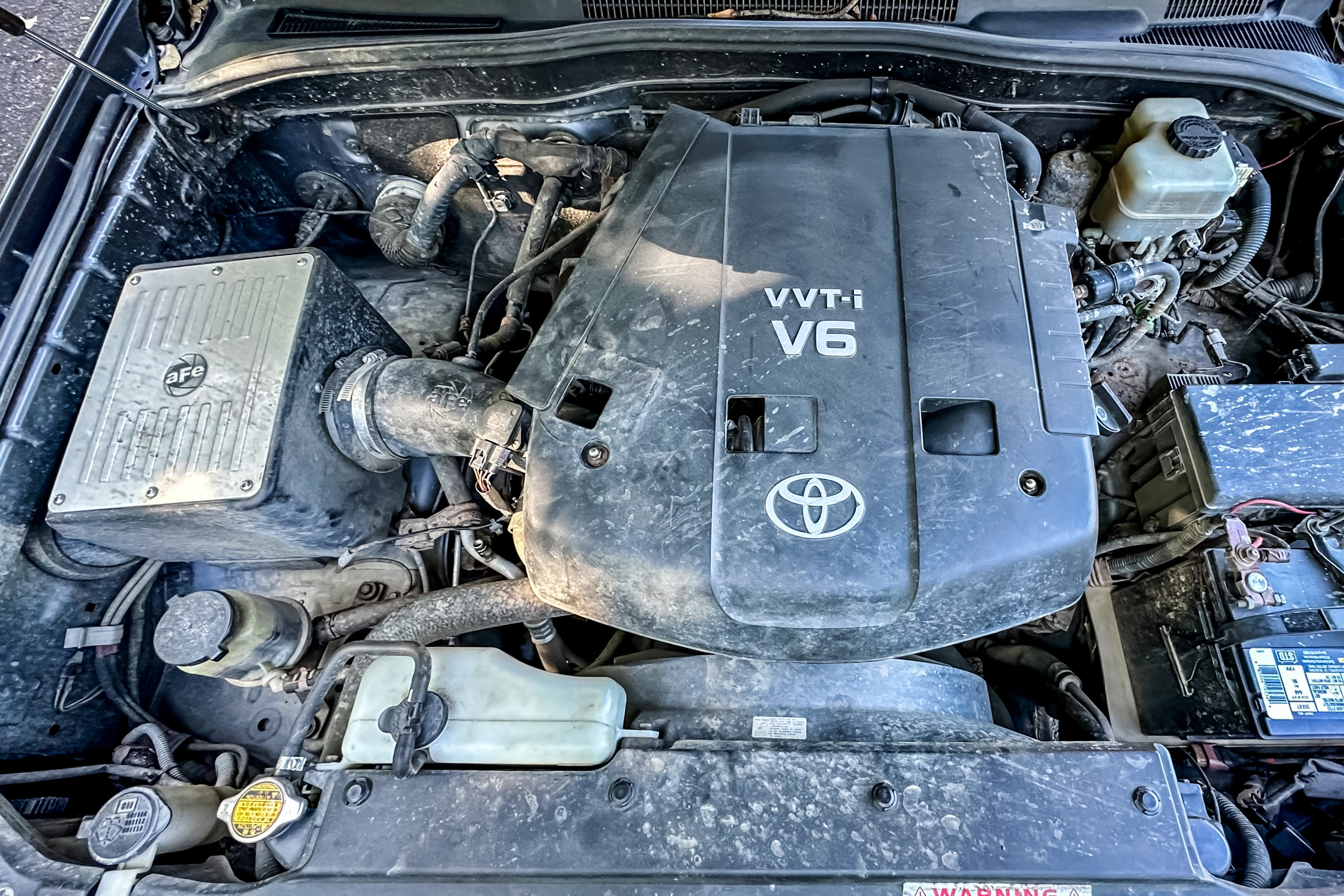How many miles can a Toyota 4Runner last? With proper care and maintenance, a Toyota 4Runner can last for 250,000 to 300,000 miles or even more, as confirmed by expert technicians at millertoyota.net. This impressive longevity makes it a reliable and worthwhile investment, offering a blend of rugged capability and lasting value for those in Boise, Idaho, and beyond. You can enhance your 4Runner’s lifespan through consistent maintenance, careful driving, and timely repairs using genuine Toyota parts.
1. What Makes the Toyota 4Runner So Long-Lasting?
The Toyota 4Runner’s longevity is due to its robust build quality, durable components, and the overall reliability associated with the Toyota brand. This makes it a popular choice for those in Boise, Idaho, looking for a dependable SUV.
Toyota 4Runner’s are known for their ability to rack up significant mileage, often exceeding 200,000 miles, with many owners reporting their vehicles lasting well beyond 300,000 miles with proper maintenance. According to vehicle lifespan data, the Toyota 4Runner is among the SUVs most likely to reach 200,000 miles. This exceptional lifespan is attributed to several key factors:
- Robust Engine Design: The 4Runner typically features a powerful and reliable engine, such as the V6, known for its durability. According to consumer reports, this engine is engineered to withstand high mileage with minimal issues when properly maintained.
- Durable Transmission: The transmission system is built to handle the demands of both on-road and off-road driving, contributing to the vehicle’s overall longevity. A well-maintained transmission ensures smooth operation and extends the lifespan of the 4Runner.
- Sturdy Frame Construction: The 4Runner’s body-on-frame construction provides exceptional durability and resilience, making it capable of withstanding rough terrain and heavy use. This design enhances the vehicle’s ability to endure challenging conditions.
- Quality Components: Toyota uses high-quality materials and components throughout the 4Runner, ensuring that critical systems like the suspension, braking, and cooling systems are reliable and long-lasting. High-quality components minimize the need for frequent repairs and replacements.
- Consistent Maintenance: Regular maintenance, including oil changes, fluid checks, and timely repairs, is essential to maximizing the lifespan of the 4Runner. Following the recommended maintenance schedule helps prevent major issues and keeps the vehicle running smoothly.
The Toyota 4Runner’s enduring design and quality components make it a standout choice for drivers seeking a vehicle that can withstand the test of time. Its reputation for reliability, combined with proper care, ensures it remains a dependable SUV for many years.
 Toyota 4Runner SR5 interior
Toyota 4Runner SR5 interior
2. What is Considered High Mileage for a Toyota 4Runner?
A Toyota 4Runner is considered to have high mileage once it exceeds 150,000 miles, but many owners continue to drive them well beyond 200,000 or even 300,000 miles with consistent maintenance. Regular maintenance can significantly extend the life of your 4Runner, making it a reliable choice for years to come.
High mileage for any vehicle is a relative term, often sparking debate among car enthusiasts and potential buyers. While a car with 100,000 miles might seem like it’s nearing the end of its life, a Toyota 4Runner is just getting warmed up. Here’s what to consider when evaluating whether a 4Runner has high mileage:
- Typical Lifespan: Most vehicles start to show signs of wear and tear around the 100,000-mile mark. However, the Toyota 4Runner is known for its exceptional durability. With proper care, it can easily surpass 200,000 miles and even reach 300,000 miles or more. This extended lifespan makes the 4Runner a reliable and worthwhile investment.
- Maintenance History: The key to a 4Runner’s longevity is its maintenance history. A 4Runner that has been consistently serviced with regular oil changes, fluid checks, and timely repairs is likely to last much longer than one that has been neglected. Always check the maintenance records before buying a used 4Runner.
- Condition of Components: Even with regular maintenance, wear and tear is inevitable. Before purchasing a high-mileage 4Runner, inspect the condition of critical components such as the engine, transmission, suspension, and brakes. Addressing any issues early can prevent more significant problems down the road.
- Driving Conditions: The conditions in which a 4Runner is driven can also impact its lifespan. Vehicles that are frequently used for off-roading or driven in harsh climates may experience more wear and tear compared to those used primarily for city driving. Understanding the vehicle’s history can help you assess its overall condition.
- Resale Value: High-mileage vehicles typically have lower resale values. However, the Toyota 4Runner holds its value remarkably well due to its reputation for reliability. While a high-mileage 4Runner may not fetch top dollar, it still represents a solid investment if it’s in good condition.
A Toyota 4Runner with over 150,000 miles is not necessarily considered “old” or unreliable. With proper maintenance and care, it can provide many more years of dependable service. Always consider the vehicle’s history, condition, and driving conditions when evaluating a high-mileage 4Runner.
3. What Are the Most Common Problems with High-Mileage Toyota 4Runners?
Common issues in high-mileage Toyota 4Runners include rust, especially in regions with harsh winters, as well as wear and tear on suspension components, catalytic converters, and oxygen sensors. Regular inspections can help identify and address these problems early.
As a Toyota 4Runner accumulates mileage, certain issues become more prevalent. Knowing these common problems can help owners in Boise, Idaho, and elsewhere stay proactive with maintenance and repairs. Here are some of the most frequently reported issues in high-mileage 4Runners:
- Rust:
- Problem: Rust is a significant concern, particularly in areas with harsh winters where road salt is used extensively. The undercarriage, frame, and body panels are most susceptible.
- Solution: Regular washing and undercarriage cleaning, especially during winter, can help prevent rust. Applying rust-proofing coatings can also provide added protection.
- Suspension Wear:
- Problem: The suspension system, including shocks, struts, and bushings, can wear out over time, leading to a decrease in ride quality and handling.
- Solution: Inspect the suspension components regularly and replace worn parts as needed. Upgrading to heavy-duty components can also improve performance and longevity, especially for those who frequently go off-roading.
- Catalytic Converter Failure:
- Problem: Catalytic converters can fail due to age, overheating, or contamination. Symptoms include reduced engine performance, poor fuel economy, and a check engine light.
- Solution: Replacing the catalytic converter is usually necessary. Using high-quality fuel and addressing engine issues promptly can help extend its lifespan.
- Oxygen Sensor Issues:
- Problem: Oxygen sensors monitor the exhaust gases and help regulate the air-fuel mixture. They can become less accurate over time, leading to poor engine performance and fuel economy.
- Solution: Replacing the oxygen sensors can restore proper engine function. It’s often recommended to replace all oxygen sensors at the same time for consistent performance.
- Fluid Leaks:
- Problem: Leaks can develop in various systems, including the engine, transmission, power steering, and brakes.
- Solution: Regularly check fluid levels and inspect for leaks. Address any leaks promptly to prevent damage to critical components. Replacing seals and gaskets can often resolve these issues.
- Cooling System Problems:
- Problem: The cooling system, including the radiator, water pump, and hoses, can develop leaks and other issues over time, leading to overheating.
- Solution: Regularly flush and refill the coolant, inspect hoses and belts for wear, and replace any worn components. Addressing cooling system issues promptly can prevent engine damage.
- Electrical Issues:
- Problem: Wiring, connectors, and other electrical components can corrode or fail over time, leading to various electrical problems.
- Solution: Inspect the wiring and connectors for damage, and clean or replace them as needed. Using dielectric grease on electrical connections can help prevent corrosion.
Addressing these common issues proactively can help keep a high-mileage Toyota 4Runner running smoothly and reliably for many years.
4. How Can I Maximize the Lifespan of My Toyota 4Runner?
To maximize the lifespan of your Toyota 4Runner, follow the manufacturer’s recommended maintenance schedule, use high-quality parts and fluids, address repairs promptly, and practice careful driving habits. These practices can significantly extend the life of your vehicle.
 Toyota 4Runner off-roading
Toyota 4Runner off-roading
Ensuring your Toyota 4Runner reaches its maximum lifespan requires a proactive approach to maintenance and care. Here are detailed steps to help you keep your 4Runner running smoothly for many years:
- Follow the Recommended Maintenance Schedule:
- Description: Adhering to the maintenance schedule outlined in your owner’s manual is crucial. This includes regular oil changes, fluid checks, filter replacements, and inspections.
- Benefits: Prevents major issues by addressing minor problems early, ensuring optimal performance and longevity.
- Example: Schedule an oil change every 5,000 to 7,500 miles using the recommended oil type to keep the engine properly lubricated.
- Use High-Quality Parts and Fluids:
- Description: Using genuine Toyota parts and recommended fluids ensures compatibility and optimal performance.
- Benefits: Enhances reliability and prevents premature wear of critical components.
- Example: Use Toyota Genuine Motor Oil and filters during oil changes to maintain engine health and performance.
- Address Repairs Promptly:
- Description: Addressing any issues as soon as they arise prevents them from escalating into more significant and costly problems.
- Benefits: Reduces the risk of major breakdowns and extends the lifespan of your 4Runner.
- Example: If you notice a strange noise or warning light, take your 4Runner to a trusted mechanic immediately for diagnosis and repair.
- Practice Careful Driving Habits:
- Description: Avoiding aggressive driving, such as hard acceleration, sudden braking, and high-speed cornering, reduces stress on the vehicle’s components.
- Benefits: Minimizes wear and tear on the engine, transmission, brakes, and suspension.
- Example: Drive smoothly and avoid unnecessary acceleration and braking to prolong the life of your tires and brake pads.
- Regularly Inspect and Clean Your Vehicle:
- Description: Inspecting your 4Runner regularly for signs of rust, leaks, and damage allows you to address issues before they become major problems.
- Benefits: Prevents corrosion and damage, maintaining the vehicle’s appearance and structural integrity.
- Example: Wash your 4Runner regularly, especially during winter, to remove salt and road grime that can cause rust.
- Properly Store Your Vehicle:
- Description: If you plan to store your 4Runner for an extended period, take steps to protect it from the elements and prevent deterioration.
- Benefits: Prevents damage from weather, pests, and other environmental factors.
- Example: Store your 4Runner in a garage or under a cover to protect it from sun, rain, and snow. Use a fuel stabilizer to prevent fuel from deteriorating.
- Monitor Fluid Levels Regularly:
- Description: Regularly check and maintain proper fluid levels, including engine oil, coolant, brake fluid, power steering fluid, and transmission fluid.
- Benefits: Ensures optimal performance and prevents damage to critical systems.
- Example: Check your engine oil level at least once a month and top off as needed to maintain proper lubrication.
- Keep Up with Tire Maintenance:
- Description: Maintaining proper tire pressure, rotating tires regularly, and replacing them when needed ensures safe handling and extends tire life.
- Benefits: Improves fuel economy, handling, and safety.
- Example: Check your tire pressure monthly and rotate your tires every 6,000 to 8,000 miles to promote even wear.
- Protect Your Vehicle’s Interior:
- Description: Protecting the interior from sun damage, stains, and wear helps maintain its appearance and value.
- Benefits: Preserves the vehicle’s resale value and makes it more enjoyable to drive.
- Example: Use seat covers to protect the seats from stains and wear, and apply a UV protectant to the dashboard to prevent cracking.
By following these steps, you can significantly extend the lifespan of your Toyota 4Runner and enjoy many years of reliable service.
5. What Maintenance is Crucial for a 4Runner to Reach High Mileage?
Crucial maintenance for a 4Runner to reach high mileage includes regular oil changes, timely replacement of filters (air, fuel, and cabin), routine inspection and maintenance of the cooling system, transmission servicing, and attention to the brake system. These steps are vital for preserving its condition.
 Toyota 4Runner front view
Toyota 4Runner front view
To ensure your Toyota 4Runner achieves high mileage and remains reliable, certain maintenance tasks are essential. Here’s a detailed breakdown of the critical maintenance items:
- Regular Oil Changes:
- Importance: Oil changes are the most crucial maintenance task for any vehicle. Fresh oil lubricates the engine’s moving parts, reduces friction, and dissipates heat.
- Frequency: Change the oil every 5,000 to 7,500 miles, depending on driving conditions and the type of oil used.
- Recommendation: Use synthetic oil for better protection and longer intervals between changes.
- Timely Replacement of Filters:
- Air Filter:
- Importance: A clean air filter ensures proper airflow to the engine, improving performance and fuel economy.
- Frequency: Replace the air filter every 15,000 to 30,000 miles, or more often in dusty conditions.
- Fuel Filter:
- Importance: A clean fuel filter prevents contaminants from reaching the engine, ensuring smooth operation and preventing damage.
- Frequency: Replace the fuel filter every 30,000 to 50,000 miles, depending on fuel quality.
- Cabin Filter:
- Importance: A clean cabin filter improves air quality inside the vehicle, removing dust, pollen, and other allergens.
- Frequency: Replace the cabin filter every 15,000 to 20,000 miles, or more often if you notice reduced airflow or odors.
- Air Filter:
- Cooling System Maintenance:
- Importance: The cooling system regulates engine temperature, preventing overheating and damage.
- Tasks:
- Coolant Flush: Flush and replace the coolant every 30,000 to 50,000 miles to prevent corrosion and maintain optimal cooling efficiency.
- Hose Inspection: Regularly inspect hoses for cracks, leaks, and swelling. Replace any worn hoses promptly.
- Radiator Cap: Ensure the radiator cap is in good condition and maintains proper pressure.
- Transmission Servicing:
- Importance: Transmission fluid lubricates and cools the transmission, ensuring smooth shifting and preventing damage.
- Frequency: Change the transmission fluid every 60,000 to 100,000 miles, depending on driving conditions.
- Recommendation: Use Toyota Genuine Transmission Fluid for optimal performance.
- Brake System Maintenance:
- Importance: The brake system is critical for safety, and regular maintenance ensures reliable stopping power.
- Tasks:
- Brake Pad Inspection: Inspect brake pads regularly and replace them when they reach the minimum thickness.
- Brake Fluid Flush: Flush and replace the brake fluid every 2 to 3 years to remove moisture and contaminants.
- Rotor Inspection: Inspect rotors for wear and damage. Resurface or replace them as needed.
- Suspension and Steering Maintenance:
- Importance: The suspension and steering systems ensure comfortable ride quality and precise handling.
- Tasks:
- Shock and Strut Inspection: Inspect shocks and struts for leaks and wear. Replace them as needed to maintain proper damping.
- Ball Joint and Bushing Inspection: Inspect ball joints and bushings for wear and play. Replace any worn components to prevent handling issues.
- Wheel Alignment: Have the wheels aligned regularly to ensure even tire wear and optimal handling.
- Regular Inspection of Belts and Hoses:
- Importance: Belts and hoses drive various engine components and carry essential fluids.
- Tasks:
- Belt Inspection: Inspect belts for cracks, fraying, and wear. Replace them as needed to prevent breakdowns.
- Hose Inspection: Inspect hoses for leaks, cracks, and swelling. Replace any worn hoses promptly.
- Battery Maintenance:
- Importance: A healthy battery ensures reliable starting and electrical system performance.
- Tasks:
- Terminal Cleaning: Clean battery terminals regularly to remove corrosion and ensure a good connection.
- Load Testing: Have the battery load-tested periodically to assess its health and remaining capacity.
By diligently performing these maintenance tasks, you can significantly extend the lifespan of your Toyota 4Runner and enjoy many years of dependable service.
6. How Does the Toyota 4Runner Compare to Other SUVs in Terms of Longevity?
The Toyota 4Runner consistently ranks high in longevity compared to other SUVs, often outlasting competitors like the Jeep Grand Cherokee and Ford Explorer. Its robust construction and reliable components contribute to its superior lifespan.
 Toyota 4Runner dashboard
Toyota 4Runner dashboard
When considering the longevity of an SUV, the Toyota 4Runner stands out as a top contender. Here’s a comparison of the 4Runner with other popular SUVs in terms of how long they typically last:
- Toyota 4Runner:
- Typical Lifespan: 250,000 to 300,000 miles or more.
- Key Factors: Known for its robust body-on-frame construction, durable engine, and reliable components. Regular maintenance can extend its lifespan significantly.
- Reputation: Renowned for reliability and ability to withstand harsh conditions.
- Toyota Highlander:
- Typical Lifespan: 200,000 to 250,000 miles.
- Key Factors: A unibody construction SUV that balances comfort and reliability. Regular maintenance is essential for reaching higher mileage.
- Reputation: Highly regarded for reliability and family-friendly features.
- Honda Pilot:
- Typical Lifespan: 200,000 to 250,000 miles.
- Key Factors: Known for its reliability and spacious interior. Regular maintenance, especially transmission servicing, is crucial.
- Reputation: A popular choice for families due to its reliability and practicality.
- Jeep Grand Cherokee:
- Typical Lifespan: 150,000 to 200,000 miles.
- Key Factors: Offers a blend of off-road capability and luxury features. However, it typically requires more frequent repairs compared to the 4Runner.
- Reputation: Known for its versatility, but reliability can vary depending on the model year.
- Ford Explorer:
- Typical Lifespan: 150,000 to 200,000 miles.
- Key Factors: A popular SUV with a spacious interior and modern features. However, it may experience more maintenance issues compared to the 4Runner.
- Reputation: Offers good value and features, but reliability can be a concern for some owners.
- Chevrolet Tahoe:
- Typical Lifespan: 200,000 to 250,000 miles.
- Key Factors: A full-size SUV with a strong engine and ample cargo space. Regular maintenance, including oil changes and transmission servicing, is essential.
- Reputation: Known for its towing capability and spaciousness, but fuel economy can be a concern.
The Toyota 4Runner generally outperforms many of its competitors in terms of longevity. Its robust construction, reliable components, and strong reputation for durability make it a standout choice for those seeking an SUV that can withstand the test of time. While other SUVs offer various advantages, the 4Runner’s proven track record of reliability and longevity sets it apart.
7. What is the Resale Value of a High-Mileage Toyota 4Runner?
A high-mileage Toyota 4Runner typically retains a strong resale value compared to other SUVs due to its reputation for reliability and longevity. Demand for used 4Runners remains high, reflecting their lasting appeal.
 Toyota 4Runner rear window
Toyota 4Runner rear window
The Toyota 4Runner is well-known for its ability to hold its value, even with high mileage. Here’s a detailed look at the resale value of a high-mileage 4Runner:
- Factors Influencing Resale Value:
- Mileage: Higher mileage typically decreases the resale value, but the 4Runner fares better than many other SUVs due to its reputation for longevity.
- Condition: The overall condition of the vehicle, including its mechanical and cosmetic condition, significantly impacts its resale value.
- Maintenance History: A well-documented maintenance history can increase the resale value, as it demonstrates that the vehicle has been properly cared for.
- Model Year and Trim: Newer models and higher trim levels generally command higher resale values.
- Market Demand: The demand for used 4Runners remains consistently high, which helps to maintain their resale value.
- Average Resale Value:
- 100,000 to 150,000 Miles: A 4Runner in good condition with mileage in this range can typically fetch between $15,000 and $25,000, depending on the factors mentioned above.
- 150,000 to 200,000 Miles: A 4Runner with mileage in this range can still be worth between $10,000 and $20,000, depending on its condition and maintenance history.
- Over 200,000 Miles: Even with mileage exceeding 200,000, a well-maintained 4Runner can still be worth $8,000 to $15,000, reflecting its enduring appeal and reliability.
- Comparison with Other SUVs:
- The Toyota 4Runner generally holds its value better than many other SUVs in its class. For example, a Jeep Grand Cherokee or Ford Explorer with similar mileage may have a lower resale value due to concerns about reliability and maintenance costs.
- Tips for Maximizing Resale Value:
- Keep Detailed Maintenance Records: Document all maintenance and repairs to demonstrate that the vehicle has been well-cared for.
- Address Repairs Promptly: Fixing any issues as soon as they arise can prevent them from escalating and affecting the vehicle’s value.
- Maintain the Vehicle’s Appearance: Keeping the exterior and interior clean and well-maintained can enhance its appeal to potential buyers.
- Consider Selling Privately: Selling the vehicle privately rather than trading it in to a dealership may result in a higher selling price.
The Toyota 4Runner’s strong resale value is a testament to its enduring reliability and popularity. Even with high mileage, a well-maintained 4Runner can command a respectable price on the used car market.
8. Are Certain Toyota 4Runner Years More Reliable Than Others?
Yes, some Toyota 4Runner years are known to be more reliable than others. Models from the early to mid-2000s (4th generation) and more recent models (5th generation, 2010 and newer) are generally considered highly reliable. It is important to research specific model years for any known issues.
 Toyota 4Runner interior
Toyota 4Runner interior
While the Toyota 4Runner is generally known for its reliability, certain model years have proven to be more dependable than others. Here’s an overview of the reliability of different 4Runner generations and specific model years:
- 3rd Generation (1996-2002):
- Overview: The 3rd generation 4Runners are generally reliable, but they are older and may require more maintenance due to their age.
- Reliable Years: 1999-2002 models are often cited as being particularly robust.
- Potential Issues: Rust can be a concern, especially in regions with harsh winters.
- 4th Generation (2003-2009):
- Overview: The 4th generation 4Runners are highly regarded for their reliability and durability.
- Reliable Years: 2003-2009 models are consistently praised for their performance and longevity.
- Potential Issues: Some models may experience issues with the X-REAS suspension system, if equipped.
- 5th Generation (2010-Present):
- Overview: The 5th generation 4Runners continue the tradition of reliability and offer modern features.
- Reliable Years: 2010 and newer models are generally very reliable.
- Potential Issues: Some early 5th generation models (2010-2013) had minor issues with the audio system.
- Specific Model Years to Consider:
- 2003-2009: These 4th generation models are known for their robust engines and durable transmissions.
- 2014-2019: These 5th generation models offer a good balance of modern features and proven reliability.
- Model Years to Research:
- 2010-2013: While generally reliable, it’s worth researching specific issues related to the audio system in these early 5th generation models.
- General Tips for Choosing a Reliable 4Runner:
- Check Maintenance Records: A well-documented maintenance history is a good indicator of how well the vehicle has been cared for.
- Inspect for Rust: Pay close attention to the undercarriage and body panels for any signs of rust, especially in older models.
- Test Drive the Vehicle: A thorough test drive can help you identify any potential issues with the engine, transmission, suspension, or brakes.
While the Toyota 4Runner is consistently praised for its reliability, researching specific model years can help you make an informed decision and choose a vehicle that meets your needs and expectations.
9. What Are Some Common Modifications to Extend the Life of a 4Runner?
Common modifications to extend the life of a 4Runner include upgrading suspension components for better durability, installing rust-proofing coatings, adding enhanced cooling system components, and upgrading the braking system for improved performance.
 Toyota 4Runner front exterior
Toyota 4Runner front exterior
While the Toyota 4Runner is inherently durable, certain modifications can further extend its lifespan and enhance its reliability. Here are some popular and effective modifications:
- Upgraded Suspension Components:
- Description: Replacing the factory suspension components with heavy-duty alternatives can improve ride quality, handling, and overall durability.
- Benefits: Extends the life of the suspension system, especially for those who frequently go off-roading or carry heavy loads.
- Examples:
- Heavy-Duty Shocks and Struts: Brands like Bilstein and Old Man Emu offer robust shocks and struts designed for demanding conditions.
- Upgraded Springs: Replacing the factory springs with stiffer or taller springs can improve load-carrying capacity and prevent sagging.
- Rust-Proofing Coatings:
- Description: Applying rust-proofing coatings to the undercarriage and body panels can protect against corrosion, especially in regions with harsh winters.
- Benefits: Prevents rust from forming and spreading, preserving the vehicle’s structural integrity and appearance.
- Examples:
- Undercoating Sprays: Products like Fluid Film and POR-15 provide a protective barrier against salt, moisture, and other corrosive elements.
- Ceramic Coatings: Applying a ceramic coating to the body panels can protect against UV rays, scratches, and chemical contaminants.
- Enhanced Cooling System Components:
- Description: Upgrading the cooling system components can improve the engine’s ability to dissipate heat, preventing overheating and damage.
- Benefits: Extends the life of the engine and prevents costly repairs.
- Examples:
- High-Performance Radiator: Replacing the factory radiator with a larger or more efficient unit can improve cooling capacity.
- Upgraded Water Pump: Installing a high-flow water pump can improve coolant circulation and prevent hot spots.
- Improved Braking System:
- Description: Upgrading the braking system can improve stopping power and reduce brake fade, enhancing safety and performance.
- Benefits: Extends the life of the brake components and provides more reliable braking performance.
- Examples:
- Performance Brake Pads: Using high-performance brake pads can improve stopping power and reduce brake fade.
- Slotted or Drilled Rotors: Installing slotted or drilled rotors can improve heat dissipation and prevent warping.
- Reinforced Skid Plates:
- Description: Adding reinforced skid plates to the undercarriage can protect critical components from damage when off-roading.
- Benefits: Prevents damage to the engine, transmission, and other vital systems.
- Examples:
- Full Skid Plate Sets: Companies like ARB and CBI Offroad Fab offer full skid plate sets that provide comprehensive protection.
- Individual Skid Plates: You can also purchase individual skid plates for specific components, such as the engine, transmission, and transfer case.
- Auxiliary Lighting:
- Description: Adding auxiliary lights can improve visibility when driving at night or in poor weather conditions.
- Benefits: Enhances safety and reduces the risk of accidents.
- Examples:
- LED Headlights: Upgrading to LED headlights can provide brighter and more efficient lighting.
- Fog Lights: Installing fog lights can improve visibility in foggy or snowy conditions.
By implementing these modifications, you can further enhance the durability and longevity of your Toyota 4Runner, ensuring it remains a reliable and capable vehicle for many years.
10. Is Buying a Used Toyota 4Runner with High Mileage a Good Idea?
Buying a used Toyota 4Runner with high mileage can be a good idea if the vehicle has been well-maintained, has a solid service history, and passes a thorough inspection. The 4Runner’s inherent reliability often makes it a worthwhile investment even with higher mileage.
 Toyota 4Runner on a trail
Toyota 4Runner on a trail
Purchasing a used vehicle always involves some level of risk, but a high-mileage Toyota 4Runner can be a smart choice under the right circumstances. Here’s what to consider:
- Potential Benefits:
- Lower Purchase Price: High-mileage vehicles typically have lower purchase prices, making them more affordable.
- Proven Reliability: The Toyota 4Runner is known for its longevity, so a well-maintained high-mileage model can still provide many years of reliable service.
- Strong Resale Value: Even with high mileage, the 4Runner holds its value relatively well compared to other SUVs.
- Key Considerations:
- Maintenance History:
- Importance: A detailed maintenance history is crucial. Look for records of regular oil changes, fluid checks, filter replacements, and other essential maintenance tasks.
- What to Look For: Consistent maintenance indicates that the vehicle has been properly cared for, increasing the likelihood of continued reliability.
- Condition of Components:
- Engine and Transmission: Have a trusted mechanic inspect the engine and transmission for any signs of wear, leaks, or damage.
- Suspension and Brakes: Check the suspension components and brakes for wear and tear. Replacing worn parts can add to the overall cost of ownership.
- Rust: Inspect the undercarriage and body panels for rust, especially in regions with harsh winters. Rust can compromise the vehicle’s structural integrity.
- Thorough Inspection:
- Pre-Purchase Inspection: Have a trusted mechanic perform a pre-purchase inspection to identify any potential issues before you buy the vehicle.
- What to Check: The inspection should include a compression test, a check of all fluids, and a thorough examination of the engine, transmission, suspension, brakes, and electrical system.
- Driving Conditions:
- Previous Use: Consider how the vehicle was used by its previous owner. A 4Runner that was primarily used for off-roading may have experienced more wear and tear compared to one that was used primarily for city driving.
- Test Drive:
- Importance: A thorough test drive can help you identify any potential issues with the engine, transmission, suspension, or brakes.
- What to Look For: Pay attention to how the vehicle handles, shifts, and brakes. Listen for any unusual noises or vibrations.
- Maintenance History:
- Potential Drawbacks:
- Increased Maintenance Costs: High-mileage vehicles may require more frequent repairs and maintenance compared to newer models.
- Wear and Tear: Components such as the suspension, brakes, and exhaust system may be nearing the end of their lifespan and could require replacement.
- Making the Decision:
- Assess Your Needs: Consider how you plan to use the vehicle and whether a high-mileage 4Runner meets your needs and budget.
- Compare Prices: Research the market value of similar high-mileage 4Runners to ensure you’re getting a fair price.
- Factor in Potential Repairs: Set aside a budget for potential repairs and maintenance costs.
Buying a used Toyota 4Runner with high mileage can be a rewarding experience if you do your homework and choose a vehicle that has been well-maintained. With proper care, a high-mileage 4Runner can provide many more years of reliable service.
Conclusion
The Toyota 4Runner is renowned for its exceptional longevity, with many owners driving their vehicles well past 250,000 miles and beyond. By following a strict maintenance schedule, using high-quality parts, and practicing careful driving habits, you can maximize the lifespan of your 4Runner and enjoy years